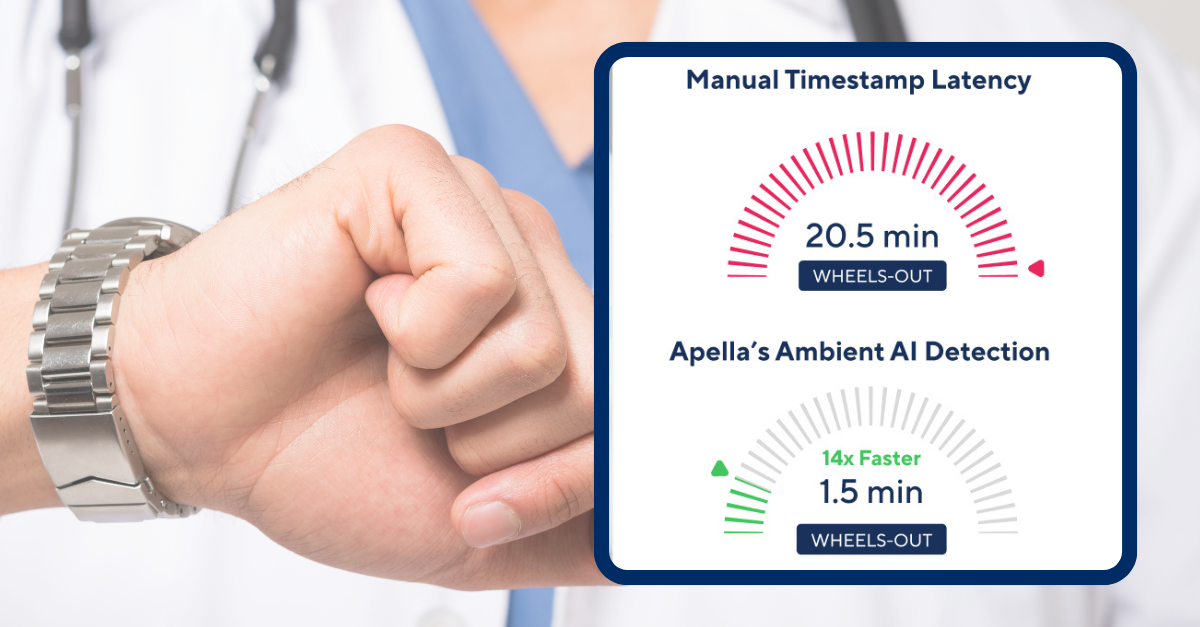Ask any OR leader if the EHR reflects what’s actually happening at any given moment, and you’ll get a classic answer: “It depends.”
Technically, EHRs can and often do capture the truest version of the daily reality in the OR. However, they were built to document patient and clinical details after the fact (specifically for billing and compliance), not to guide real-time decision-making or improve the strategies underlying care. So relying on EHR data entry for real-time decision-making can create delays, particularly on busy surgical days when the team’s attention is, as it should be, on the patient rather than documentation.
EHRs lag behind the action
Here’s the reality: surgical teams are focused on moving patients, coordinating care, and responding to the unexpected, leaving little time to log timestamps. While that’s completely understandable, missing these updates can disrupt the entire OR schedule.
Take, for example, two simple but crucial milestones:
- Wheels-in signals the surgical team to scrub in and prep.
- Wheels-out tells the PACU to be ready to receive the patient and the turnover staff that it’s time to clean and prep for the next case.
When these timestamps aren’t logged in real time, transitions stall. Downstream teams are left waiting, utilization suffers, and unplanned overtime piles up — all because the next step in the workflow wasn’t triggered on time.
Check out our complete ebook on Vital Stats: Uncovering Hidden Inefficiencies in the OR to learn about the blind spots that ambient AI exposes and traditional documentation in the EHR often overlooks.
19 minutes can disrupt the whole day
Ambient AI technology in the OR captures team movements and the impact of time delays. An analysis of tens of thousands of cases conducted across 29 hospital sites for a six-month period between September 2024 and February 2025 showed that the average delay in recording wheels-in in the OR is 19 minutes. Wheels-out is even more delayed, by an average of 20 minutes. Multiply that by as many as 10 surgeries per OR per day across dozens of ORs, and the lost time adds up fast.

Apella’s ambient AI works silently in the background, automatically detecting 14 key time-based events — including events that are otherwise omitted from typical documentation — and can record them directly to the EHR with no added burden on staff.
The impact is significant:
- Wheels-in is captured in just 1.7 minutes — 11x faster than manual EHR entry.
- Wheels-out is recorded in 1.5 minutes — 14x faster, reducing downstream delays.
Healthcare teams should be focused on patients, not on data entry. By eliminating the need for manual documentation, Apella ensures that critical moments are captured accurately and in real time, which can be the difference between a smooth day and a snowball of delays.
In the next post of our Vital Stats series, we explore why FCOTS isn't enough to prevent delays that lead to late days and overtime.
Check out our complete ebook on Vital Stats: Uncovering Hidden Inefficiencies in the OR to learn about the blind spots that ambient AI exposes and traditional documentation in the EHR often overlooks.

